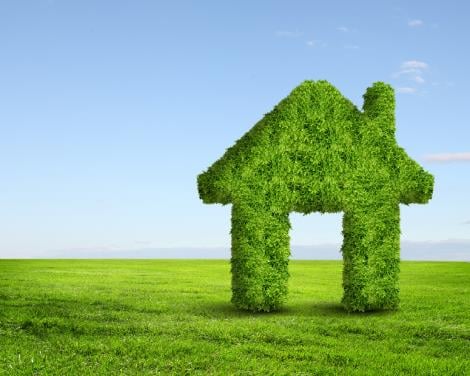On paper it makes perfect sense. Recognizing that an energy-efficient house will have lower operating costs every month, your mortgage broker allows you to borrow more money than you would normally qualify for. Put another way, by decreasing your home’s energy use you can increase your borrowing power. These energy-saving improvements might include anything from buying ENERGY STAR® appliances to installing a super-efficient furnace, upgrading attic insulation, or having replacement windows or solar panels installed.

© Sergey Nivens - Fotolia.com
So-called “green” mortgages –also known as energy-efficient mortgages or EEMs—aren’t new. In fact, they date back to 1980, when President Carter presided over the energy crisis spawned by the Arab oil embargo. Back then, the range of energy-saving home improvements wasn’t very broad. Today, the technology associated with energy efficiency has advanced in leaps and bounds. In fact, it’s been a growth area in the otherwise slumping housing sector. The products and techniques associated with energy efficiency are truly impressive.
Let’s look at just a few examples: a new heat pump water heater developed by General Electric that’s over 60% more efficient than a standard electric resistance water heater; asphalt roof shingles designed to reduce cooling costs, new “direct-exchange” geothermal heat pumps that provide whole-house heating and cooling at a 50%-70% savings over other HVAC systems, and roof shingles that generate electricity from sunlight using “thin-film” photovoltaic technology.
Technically, any bank insured through the FDIC can issue EEMs, so a homeowner anywhere in the U.S. should be able to get a green mortgage. But according to research done by the New York Times, less than 1% of all home loans are EEMs. So what’s up with this? Why haven’t more homeowners taken advantage of this program to make homes more environmentally friendly and less costly to own?
What caused green mortgages to wither on the vine?
The fact that mortgage interest is tax-deductible makes an EEM much more attractive for financing energy-saving upgrades than using a credit card, cash or bank loan to pay for these improvements. Yet very few of these green mortgages are being made. Here are the main reasons why green mortgages haven’t become as popular or prevalent as one might expect:
The good news: Energy-saving upgrades are still attractive and important
Fortunately, the dark cloud that seems to have hovered over EEMs has a silver lining. There are still attractive incentives in place for improving home energy efficiency. Complimenting the ARRA programs that haven’t been cut are numerous local energy-efficiency initiatives sponsored by utilities, state agencies and local organizations. For example, more than 20 states and 200 utilities currently offer incentives for solar energy systems (photovoltaics and/or solar thermal systems) that cover between 10% and 30% of project costs. For up-to-date details on what incentives are available in your area, visit the Database of State Incentives for Renewables & Efficiency.
In the aftermath of hurricane Sandy, many people are connecting the dots between energy efficiency and storm readiness. After all, a house that requires less electricity to run will make better use of the limited power available from a generator that delivers electricity when the grid goes down. Some homeowners are even opting to have PV panels installed along with deep-cycle batteries that can power the house at night and be recharged by solar electricity during the day. With or without green mortgages, homes will continue to benefit from technology that cuts energy consumption or generates energy from renewable resources.
About the author: Tim Snyder is a journalist specializing in sustainability, energy efficiency and home building topics. Tim writes frequently for Dr. Energy Saver, a nationwide network of home energy contractors.